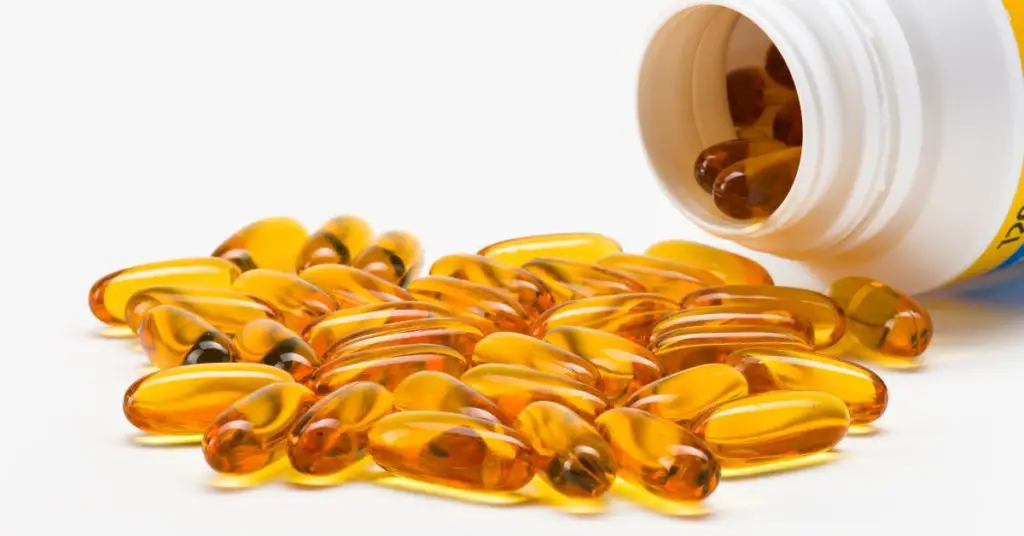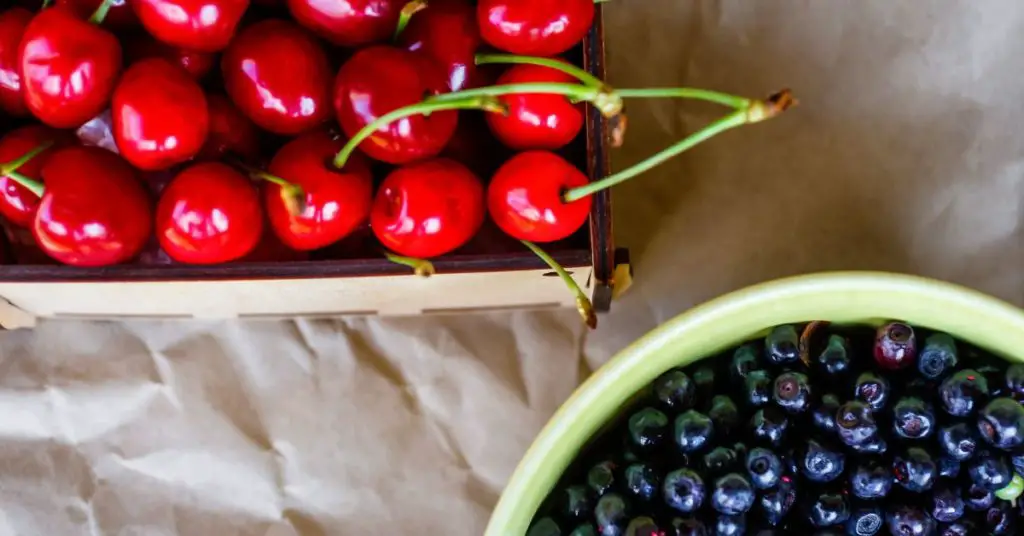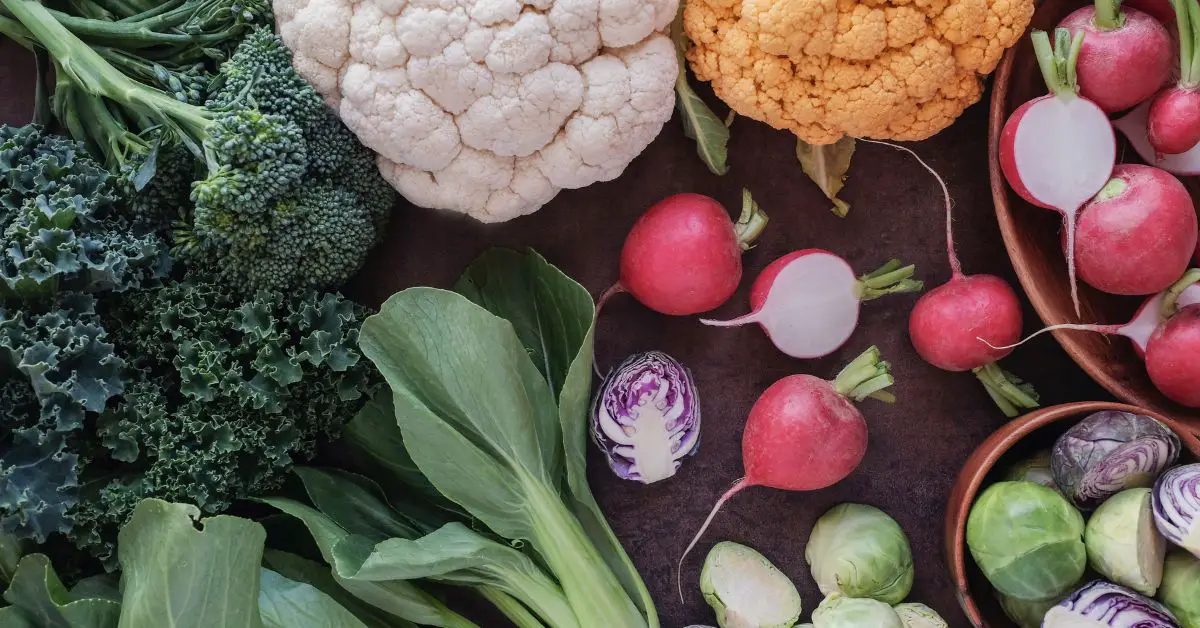Is a low-histamine and anti-inflammatory diet more effective than a low-histamine diet alone for treating histamine intolerance symptoms? Histamine intolerance can cause a range of unpleasant symptoms, including allergy-like symptoms, digestive issues, and even mental health issues, like anxiety. (1)
The goal of a low-histamine diet is to reduce your body’s histamine burden, so you can tame the wide range of symptoms you experience when your histamine levels rise. The key to doing this is to carefully select what you put on your plate.
The first rule is to pick low-histamine foods. But can you get additional benefits by adding anti-inflammatory foods to a low-histamine diet? That’s the topic of this article. Can you benefit even more by eating a low-inflammatory diet too?
Why Adding Anti-Inflammatory Foods to a Low-Histamine Diet is Beneficial
Histamine intolerance is a condition linked with low-grade inflammation (1), so it makes sense that consuming anti-inflammatory foods would be beneficial. Histamine itself is a potent inflammatory mediator, commonly associated with allergic reactions.
By choosing anti-inflammatory foods and eliminating foods and beverages that trigger inflammation, you can reduce your histamine intolerance symptoms. You don’t want to give up your low-histamine diet, but by adding anti-inflammatory foods to your plate, you may get additional benefits.
Plus, eating an anti-inflammatory diet is better for your health. Almost every health condition has an inflammatory component, from autoimmune diseases to cardiovascular disease. Alzheimer’s disease and cancer.(2)
So, adopting a low-histamine AND anti-inflammatory diet may not only reduce the impact of histamine on your body, but also lower your body’s level of inflammation.
Low-grade inflammation can make histamine intolerance symptoms worse. It’s a holistic approach to managing histamine intolerance that makes sense for your health.
The Components of a Low-Histamine, Anti-Inflammatory Diet
A low-histamine and anti-inflammatory diet consists of low-histamine foods but also includes foods that naturally contain components linked with reduced inflammation.
We know that fruits, vegetables, and spices contain a variety of antioxidants and anti-inflammatory chemicals, but there are others, including lentils and whole grains. (3)
It’s also important to avoid foods that promote inflammation. Let’s look at some strategies for reducing the amount of histamine in your diet and adding more foods that reduce inflammation.
First, Lower the Histamine Content of Your Diet
The most important step you can take with histamine intolerance is to switch foods and beverages low in histamine. Diet is a significant source of histamine exposure, and removing high-histamine foods and histamine liberators is always the first step. (4)
While doing this, keep a food diary. In it, record what you eat and any symptom you experience, so you can identify foods that trigger histamine intolerance symptoms.
There’s no point in adding anti-inflammatory foods to your diet if you’re still eating foods that increase your body’s histamine burden.
A food diary will give you a better understanding of the relationship between what you eat and your symptoms. Don’t skip this step!
Now let’s look at some specific dietary strategies you can adopt to fit in with a low-histamine, anti-inflammatory eating strategy.

Embrace Omega-3s to Lower Inflammation
Omega-3s are fatty acids in fish and fish oil, as well as some plant-based foods, like chia seeds, hemp seeds, sesame seeds, and walnuts. Studies show omega-3s reduce inflammation. (5)
However, the best documented anti-inflammatory benefits come from long-chain omega-3s in fish and fish oil.
Plant-based sources of omega-3s are short chain in nature. Short-chain omega-3s likely have anti-inflammatory benefits, but there are fewer studies to support this.
Still, research shows that short-chain omega-3s may help with blood sugar control, immune health, and strengthens the integrity of the gut lining, which is important for preventing autoimmune issues. (6)
If you have histamine intolerance, you can get long-chain omega-3s from low-histamine seafood, but the seafood you choose must be as fresh, as fish accumulate histamine quickly unless it’s frozen right away.
Another option is to take a fish oil capsule. Fish oil capsules, because of the way they’re processed, usually contain low levels of histamine.
You can also add plant-based sources of omega-3s to your diet (in the short-chain form) by consuming low-histamine omega-3 rich seeds, like chia and hemp seeds.
You can add them to your oatmeal in the morning. Oatmeal is another low-histamine food with anti-inflammatory benefits.
Always talk to your physician before taking supplements, especially if you are on other medications or supplements.

Add More Quercetin-Rich Foods to Your Diet
Quercetin is a bioflavonoid with antioxidant and anti-inflammatory activity. Research shows it also helps protect against mycotoxins in foods. (7) Examples of low-histamine foods that contain quercetin include:
- Red apples
- Grapes
- Blueberries
- Cherries
- Broccoli
- Green beans
- Leafy greens (avoid spinach due to its histamine content)
- Parsley
The reason quercetin is beneficial for histamine intolerance is because of its natural antioxidant and antihistamine activity.
Along with quercetin, foods like blueberries, blackberries, cherries, and apples contain natural antihistamine properties, which helps counter the negative effects of histamine on your body.
By including these vibrant, flavorful fruits in your meals and snacks, you can potentially experience a reduction in symptoms and enjoy greater well-being.
Avoiding Triggering Inflammatory Foods
Along with adding more anti-inflammatory foods to your diet, make sure you’re avoiding foods that trigger inflammation. These include:
- Ultra-processed foods
- Refined sugars and artificial sweeteners
- Foods that contain trans-fat
- Sugary beverages
- Alcohol
Histamine Intolerance Is a Challenging Condition
No matter how you look at it, histamine intolerance is a challenging condition to navigate. But by adopting a low-histamine and anti-inflammatory diet, you lower your histamine level, AND the inflammation that can further worsen your histamine intolerance symptoms and increase the risk of other health problems.
Be sure to implement dietary changes gradually, while monitoring your symptoms.
Focus on identifying triggers, avoiding inflammatory foods, and adding more anti-inflammatory and antihistamine-rich foods to your plate. By making these conscious choices, you can take significant steps towards managing histamine intolerance and enjoying a more vibrant, symptom-free life. Can the anti-inflammatory benefits of spirulina be useful for histamine intolerance?
References:
- Comas-Basté O, Sánchez-Pérez S, Veciana-Nogués MT, Latorre-Moratalla M, Vidal-Carou MDC. Histamine Intolerance: The Current State of the Art. Biomolecules. 2020 Aug 14;10(8):1181. doi: 10.3390/biom10081181. PMID: 32824107; PMCID: PMC7463562.
- “All about inflammation – Harvard Health.” 15 Jun. 2020, https://www.health.harvard.edu/staying-healthy/all-about-inflammation.
- Zhu F, Du B, Xu B. Anti-inflammatory effects of phytochemicals from fruits, vegetables, and food legumes: A review. Crit Rev Food Sci Nutr. 2018 May 24;58(8):1260-1270. doi: 10.1080/10408398.2016.1251390. Epub 2017 Jun 12. PMID: 28605204. Anti-inflammatory effects of phytochemicals from fruits, vegetables, and food legumes: A review – PubMed (nih.gov)
- Sánchez-Pérez S, Comas-Basté O, Veciana-Nogués MT, Latorre-Moratalla ML, Vidal-Carou MC. Low-Histamine Diets: Is the Exclusion of Foods Justified by Their Histamine Content? Nutrients. 2021 Apr 21;13(5):1395. doi: 10.3390/nu13051395. PMID: 33919293; PMCID: PMC8143338.
- “Omega-3 in fish: How eating fish helps your heart – Mayo Clinic.” 19 Apr. 2022, https://www.mayoclinic.org/diseases-conditions/heart-disease/in-depth/omega-3/art-20045614.
- Nogal A, Valdes AM, Menni C. The role of short-chain fatty acids in the interplay between gut microbiota and diet in cardio-metabolic health. Gut Microbes. 2021 Jan-Dec;13(1):1-24. doi: 10.1080/19490976.2021.1897212. PMID: 33764858; PMCID: PMC8007165.
- Yang D, Wang T, Long M, Li P. Quercetin: Its Main Pharmacological Activity and Potential Application in Clinical Medicine. Oxid Med Cell Longev. 2020 Dec 30;2020:8825387. doi: 10.1155/2020/8825387. PMID: 33488935; PMCID: PMC7790550. Quercetin: Its Main Pharmacological Activity and Potential Application in Clinical Medicine – PubMed (nih.gov)

